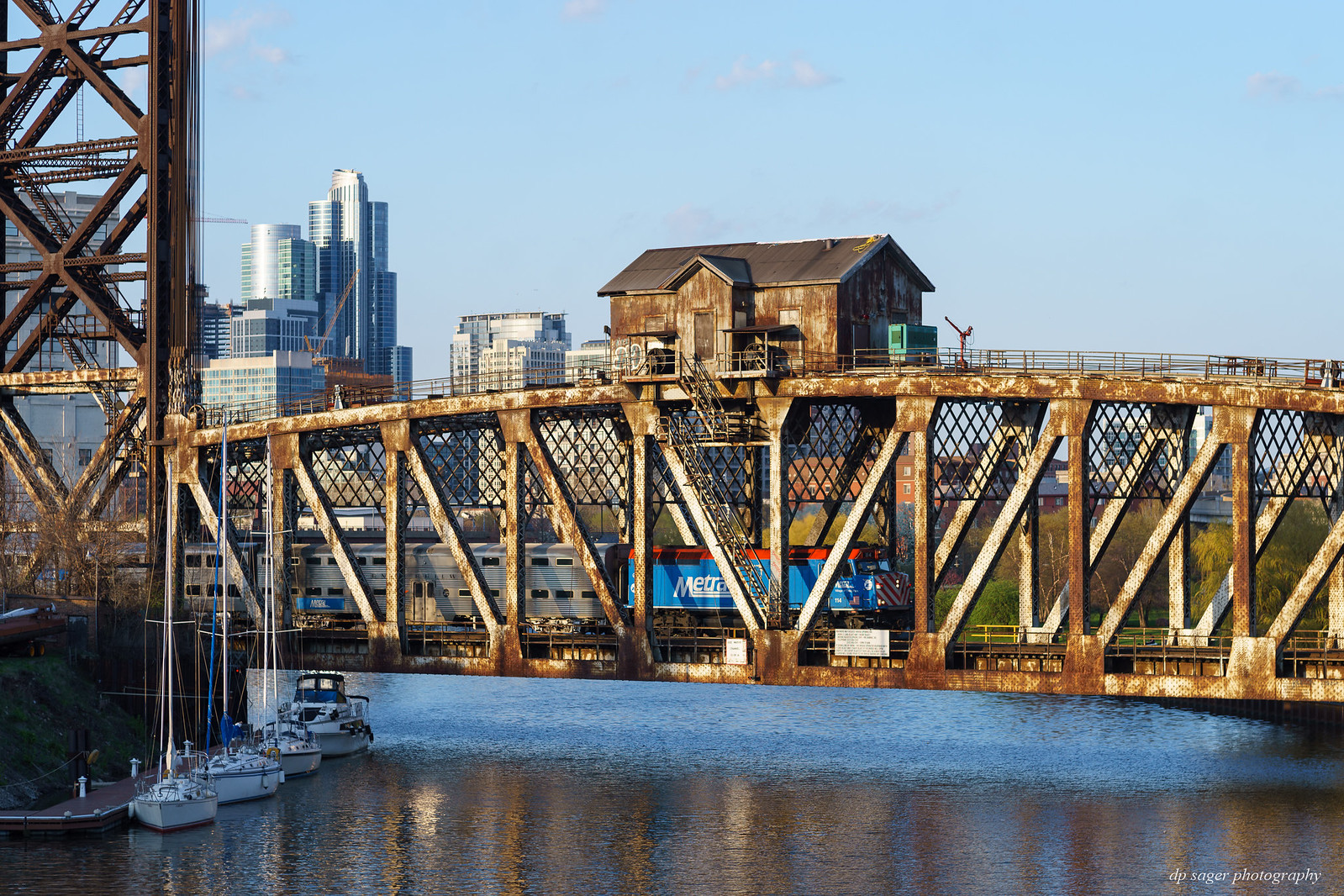Chicago's Bridges
Jun 10, 2021 13:12:25 #
Jun 10, 2021 13:22:55 #
Ballard
Loc: Grass Valley, California
CHG_CANON wrote:
Chicago's geography has presented unusual requirem... (show quote)
Very dramatic images of the bridges. Great work.



Jun 10, 2021 15:29:03 #
Jun 10, 2021 15:48:31 #
CHG_CANON wrote:
Chicago's geography has presented unusual requirem... (show quote)
Paul I sent these on to my sister that use to live in Chicago. She loved seeing them. She mentioned they called them the singing bridges because of the sound when cars crossed them.
Jun 10, 2021 18:31:53 #
Jun 10, 2021 19:59:57 #
CHG_CANON wrote:
Chicago's geography has presented unusual requirements since the earliest days of the city. ]
One of my favorite place to have a picnic date was sitting under the bridge, especially at Lake Shore Drive. We would put a blanket down between us. Pull everything out of a picnic basket and set up, with our backs to the wall below the bridge span. When a ship came through, we could feel the whole works as the span was pivoted. "Impressive" does not even reach the feeling.
 This was in the 1960s.
This was in the 1960s.There was a group of SCUBA divers in the Chicago Fire Department designated to go after the drowned folks, for whatever reason, in the river.The two 90 degree turns of Lake Shore Drive earned their own reputations, for the "Chicago Sendoff". And then there is Lower Wacker Drive 90 Degree curve that had the reputation of bodies rolling into the river.
Again, great shooting and information.



Jun 10, 2021 22:41:37 #
CHG_CANON wrote:
Chicago's geography has presented unusual requirem... (show quote)
Thank-you for a great tour of the Windy City bridges. Great work as always.
Jun 11, 2021 00:27:23 #
Jun 11, 2021 01:42:05 #
Jun 11, 2021 06:11:43 #
Stephan G wrote:
One of my favorite place to have a picnic date was... (show quote)
Thank you Stephan! The south bank of the river from Lake Michigan through Wolf Point is now developed and called the 'River Walk'. It's been going on for a few years, even some of the construction is shown in the older images from 2015.
Jun 11, 2021 06:11:57 #
junglejim1949 wrote:
Paul I sent these on to my sister that use to live in Chicago. She loved seeing them. She mentioned they called them the singing bridges because of the sound when cars crossed them.
Thank you Jim! The bridges are mostly 'open' in the roadway in the sense of being grates. This might be the source of 'singing' as the cars driver over the grating.
Jun 11, 2021 06:12:21 #
DWU2 wrote:
Great series - good composition and texture. By any chance were some taken on the Chicago river architecture boat cruise?
Thank you Dan! None of these are from 'official' architecture tours. Our company occasionally had office outings, chartering a smaller boat for a private trip along the river. Some of these images are from at least two of these trips.
Jun 11, 2021 06:12:31 #
Thank you rdemarco52, junglejim1949, sippyjug104, Dan, Hereford, DonVA, Ellen, Earnest, Bushpilot, Susan, Ballard, Bill_R, DeanS, Stephan G, Mainridge, Doc Mck, Vince! Today Chicago officially reopens. The mayor is saying we're the largest city in the US to reach this level. The Cubs just happen to arrive home from a West Coast roadtrip to face our arch rivals the Cardinals on what is being billed as Opening Day 2.0. Glad you enjoyed all these trips to the river.
Jun 11, 2021 10:19:57 #
AnotherAmateur
Loc: Midwest USA
UTMike wrote:
Excellent, Paul! Have you ever thought about a photo book on Chicago?
Exactly what I was thinking, too.
Wonderful images and narration. I like the perspective of being on the water.
I wish my father-in-law was still with us; he would have loved this post.
Jun 11, 2021 20:50:03 #
CHG_CANON wrote:
Chicago's geography has presented unusual requirem... (show quote)
Another great set! The detail, the colors are wonderful! I have a real sense of being there. Thanx for sharing!
If you want to reply, then register here. Registration is free and your account is created instantly, so you can post right away.

















